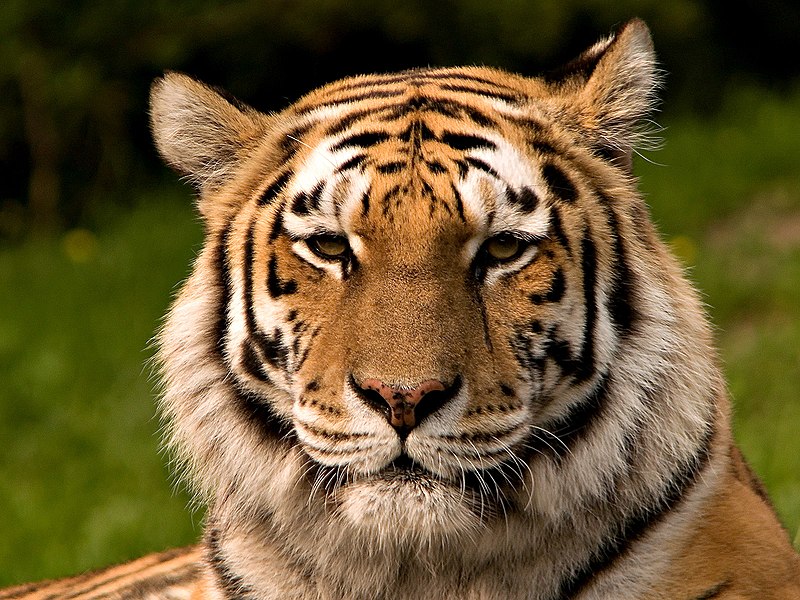Wildlife Conservation is the practice of protecting wild plant and animal species and their habitats. The goal of wildlife conservation is to ensure that nature will be around for future generations to enjoy and also to recognize the importance of wildlife and wilderness for humans and other species alike.[1] Many nations have government agencies and NGO's dedicated to wildlife conservation, which help to implement policies designed to protect wildlife. Numerous independent non-profit organizations also promote various wildlife conservation causes.
According to the National Wildlife Federation, wildlife in the United States gets a majority of their funding through appropriations from the federal budget, annual federal and state grants, and financial efforts from programs such as the Conservation Reserve Program, Wetlands Reserve Program and Wildlife Habitat Incentives Program. Furthermore, a substantial amount of funding comes from the state through the sale of hunting/fishing licenses, game tags, stamps, and excise taxes from the purchase of hunting equipment and ammunition, which collects around $200 million annually.
Wildlife conservation has become an increasingly important practice due to the negative effects of human activity on wildlife. An endangered species is defined as a population of a living species that is in the danger of becoming extinct because of several reasons.Some of The reasons can be, that 1. the species have a very low population, or 2. they are threatened by the varying environmental or prepositional parameters
Major dangers to wildlifeClimate change: Climate change: Global warming is making hot days hotter, rainfall and flooding heavier, hurricanes stronger and droughts more severe. This intensification of weather and climate extremes will be the most visible impact of global warming in our everyday lives. It is also causing dangerous changes to the landscape of our world, adding stress to wildlife species and their habitat. Since many types of plants and animals have specific habitat requirements, climate change could cause disastrous loss of wildlife species. A slight drop or rise in average rainfall will translate into large seasonal changes. Hibernating mammals, reptiles, amphibians and insects are harmed and disturbed. Plants and wildlife are sensitive to moisture change so, they will be harmed by any change in moisture level. Natural phenomena like floods, earthquakes, volcanoes, lightning, forest fir
- Unregulated Hunting and poaching: Unregulated hunting and poaching causes a major threat to wildlife. Along with this, mismanagement of forest department and forest guards triggers this problem.
- Pollution: Pollutants released into the environment are ingested by a wide variety of organisms. Pesticides and toxic chemical being widely used, making the environment toxic to certain plants, insects, and rodents.
- Perhaps the largest threat is the extreme growing indifference of the public to wildlife, conservation and environmental issues in general.[8] Over-exploitation of resources, i.e., exploitation of wild populations for food has resulted in population crashes (over-fishing and over-grazing for example).
- Over exploitation is the over use of wildlife and plant species by people for food, clothing, pets, medicine, sport and many other purposes. People have always depended on wildlife and plants for food, clothing, medicine, shelter and many other needs. But today we are taking more than the natural world can supply. The danger is that if we take too many individuals of a species from their natural environment, the species may no longer be able to survive. The loss of one species can affect many other species in an ecosystem. The hunting, trapping, collecting and fishing of wildlife at unsustainable levels is not something new. The passenger pigeon was hunted to extinction, early in the last century, and over-hunting nearly caused the extinction of the American bison and several species of whales.
- Deforestation: Humans are continually expanding and developing, leading to an invasion of wildlife habitats. As humans continue to grow they clear forested land to crewe more space. This stresses wildlife populations as there are fewer homes and food sources to survive off of.
Wildlife conservation as a government involvement
In 1972, the Government of India enacted a law called the Wild Life (Protection) Act.The World Conservation Strategy was developed in 1980 by the "International Union for Conservation of Nature and Natural Resources" (IUCN) with advice, cooperation and financial assistance of the United Nations Environment Programme (UNEP) and the World Wildlife Fund and in collaboration with the Food and Agriculture Organization of the United Nations (FAO) and the United Nations Educational, Scientific and Cultural Organization (Unesco)"[9] The strategy aims to "provide an intellectual framework and practical guidance for conservation actions."[9] This thorough guidebook covers everything from the intended "users" of the strategy to its very priorities. It even includes a map section containing areas that have large seafood consumption and are therefore endangered by over fishing. The main sections are as follows:
- The objectives of conservation and requirements for their achievement:
- Maintenance of essential ecological processes and life-support systems.
- Preservation of genetic diversity that is flora and fauna.
- Sustainable utilization of species and ecosystems.
- Priorities for national action:
- A framework for national and sub-national conservation strategies.
- Policy making and the integration of conservation and development.
- Environmental planning and rational use allocation.
- Priorities for international action:
- International action: law and assistance.
- Tropical forests and dry lands.
- A global programme for the protection of genetic resource areas.
Map sections:
- Tropical forests
- Deserts and areas subject to desertification.







